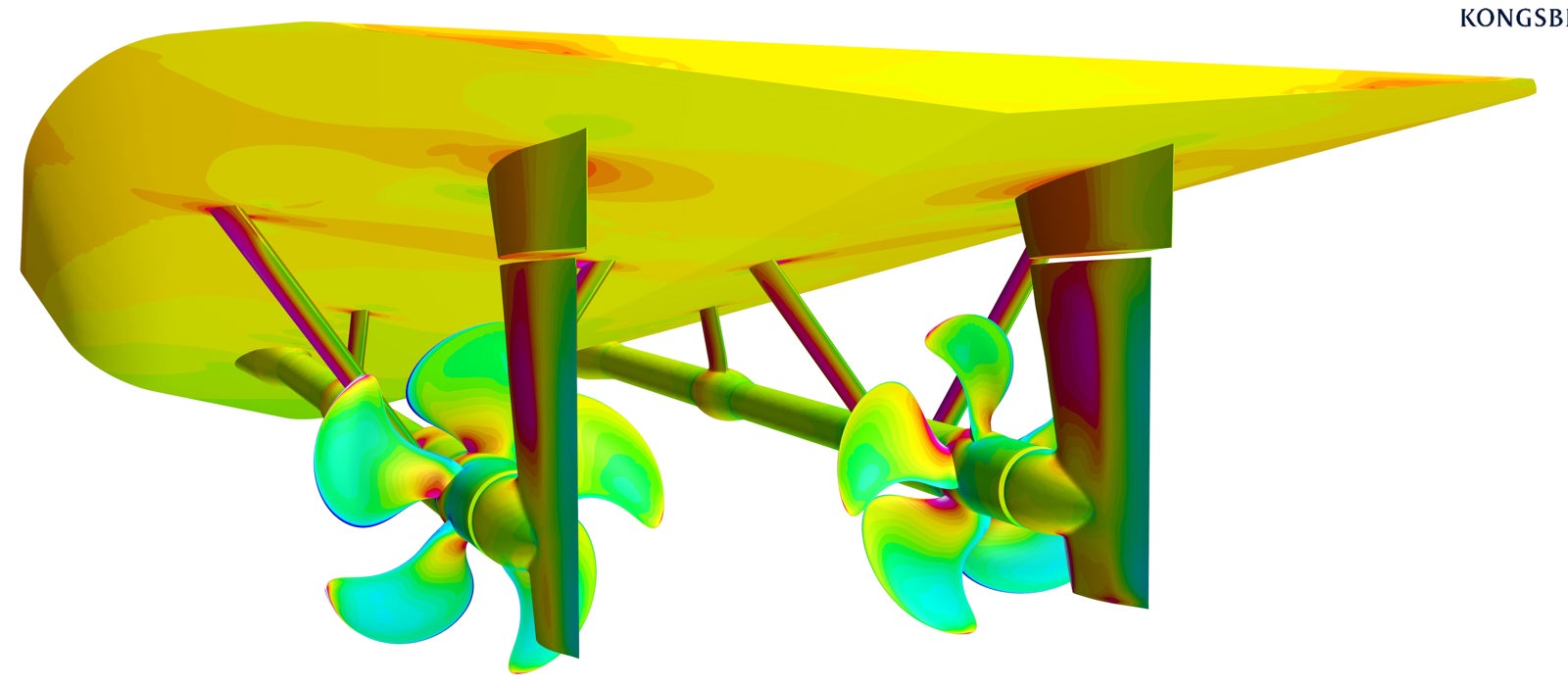
Promas is the positive choice
Our business area Kongsberg Maritime has completed a research programme that shows its Promas propeller and rudder system can deliver increased fuel efficiency, better manoeuvrability and extended range for naval platforms.
Recent research has shown that naval vessels relying on traditional rudder and propeller systems can increase their efficiency and manoeuvrability with the adoption of our Promas propeller and rudder system. Promas can deliver fuel savings of more than 5 per cent which can translate into increased range, boosting the capability of naval platforms.
Kongsberg Maritime’s Hydrodynamic Research Centre (HRC) in Kristinehamn, Sweden, tested and compared the Promas bulb-rudder system and the conventional off-centre rudder system used by navies on a typical naval aft ship dummy design. The dummy design consisted of an open shaft configuration with V-bracket and a high shaft inclination angle to produce a typical wake field for a naval twin screw vessel.
The testing conducted by the HRC compared propulsive efficiency, rudder forces, cavitation inception speed, cavitation, pressure pulses and noise levels between Promas and conventional navy propulsion for ship speeds up to 25 knots.
The tests showed the Promas system offered efficiency increases of between 5 and 6.3 per cent compared to a conventional naval system with an off-centre rudder. The savings depended on the speed. At 25 knots, the Promas system reduced power consumption by 6 per cent.
The rudder forces with Promas are also much higher. The system demonstrated less drag at small rudder angles and a higher lift at larger angles than a conventional navy system. This improves slow speed and harbour manoeuvring.
The measured pressure pulse (PP) levels were lower with the Promas set-up compared to the conventional system and noise levels were lower for the Promas system at frequencies below 1 kHz. At 25 knots, the cavitation patterns on the propeller blade were similar for both the conventional system and the Promas set-up.
For 15 years, the commercial shipping industry has used Promas to save fuel. But for naval vessels with a top speed between 20 and 25 knots, the results of HRC’s research point to significant increases in system efficiency that are within reach. Calculations done for naval vessels indicate that improvements in efficiency could go beyond the 6 per cent achieved in testing.
The successful Promas system is now being offered to naval customers
Patrik Kron, Kongsberg Maritime’s Chief of Naval Systems, says: “We’re delighted with these results. We’ve known for many years how Promas brings a quick improvement in efficiency for commercial operators, and this latest research, where we pitched Promas against a more conventional naval propulsion configuration, demonstrates how these benefits can be offered to our governmental customers.
“One of the main advantages of Promas is that the propeller and rudder are treated and designed as one unit. Most naval twin-screw vessels use conventional rudders placed off-centre from the shaft centreline.
Vessels are able to extend their range, something which can be crucial on longer missions.
“By being able to demonstrate an improved efficiency of around 6 per cent, for navies this means their vessels are able to extend their range, something which can be crucial on longer missions.
“We know there is a large market for grey and light grey ships operating up to 25 knots, so our initial research has focused on that speed range, but we’re continuing our research to consider how Promas could enhance the operational capability of combatants which operate at up to 30 knots.”

Promas features on a new Belgian research vessel, the RV Belgica, which entered service in 2022.
